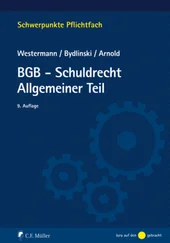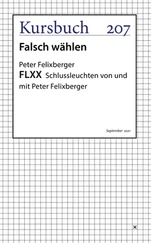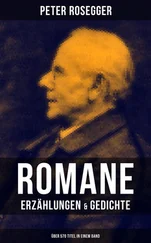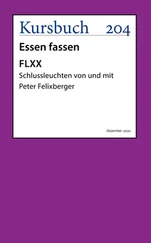Elizabeth didn’t like to consider that possibility, but the history of the New Madrid Seismic Zone showed that it had happened before.
More traffic was out—mainly cars and pickups and, unbelievably, a few eighteen-wheeler rigs trying to avoid I-55. Atkins figured it wouldn’t be long before the authorities closed all highways in the area to everything but emergency vehicles.
Ever since they’d crossed the Mississippi, the change in topography had been striking. The rolling, forested terrain of western Kentucky and Tennessee had given way to country as flat as any desert. They were passing through the Missouri boot heel, a sliver of the state that dipped into Arkansas.
It was part of the Mississippi Embayment, which started roughly where the Ohio River merged with the Mississippi and broadened out in an inverted U to the Gulf of Mexico. The embayment contained the famous Reelfoot Rift, a weak zone in the middle of the North American plate where the earth had tried to pull apart 600 million years earlier. The New Madrid faults were part of the residual scar tissue.
Atkins knew that the northwestern edge of the embayment, the section they were driving through, was the most interesting geologically. The land, an ancient flood plain, was used mainly for agriculture—soybeans and some cotton. The main characteristics were drainage ditches, grain elevators, irrigation pipes, and vast fields crisscrossed with rows of poplar trees.
They crossed the Missouri state line into Arkansas. Blytheville was four miles south, right on Route 61. The epicenter was another five or six miles due south. Atkins took a bypass to get around Blytheville. For the last few miles, they’d noticed dark smoke hanging low on the horizon. The black smudge looked frozen on the gray winter sky.
It was Blytheville burning.
“How many people live there?” Atkins asked.
Elizabeth checked the map. “About thirty thousand,” she said.
It was a much larger town than he’d imagined. He doubted a single building had escaped serious damage and thought, again, about casualties. They were going to be horrific.
Five miles later, the smoke was still visible. Atkins turned west on an unmarked country road. He drove another mile, passing a pair of dark-blue grain silos that had been upended by the earthquake. Corn had poured like gold from the gaping cracks. There wasn’t a house in sight, just cotton fields that had been picked nearly two months earlier and were still white with cotton the machines had missed. It was bleak country.
“What about here?” Atkins asked, pulling to a stop on the shoulder of the road.
They’d reached the approximate location of the epicenter.
Elizabeth nodded. “Look up ahead,” she said.
About a hundred yards down the road, the blacktop had been split wide open. Large pieces of broken pavement were stacked up against each other in overlapping layers. The fissure had gouged the road at a right angle.
Atkins and Elizabeth got out of the Explorer.
“Do you smell that?” Elizabeth asked.
“Ever since we hit the Arkansas line,” Atkins said. The strong odor of sulfur was heavy in the cold air. It was the same smell he’d noticed the night before.
The offset was large. Nothing like what they’d seen on the Mississippi, but still striking. The ground on the far side of the highway, the hanging wall, was at least four feet higher than on their side.
The fissure—it was six feet deep—ran as far as the eye could see in either direction, west to east.
“That looks like classic strike-slip horizontal tearing,” Elizabeth said, walking to the edge of the fissure. “The right lateral movement must have been incredible.”
Shielding his eyes against the wind, Atkins had no doubt that the faulting had generated some monstrous seismic waves.
“I’d suggest we set up around here,” he said.
Somewhere below them, at the hypocenter of the quake, probably at a depth of over five or six miles, one of the major faults in the New Madrid Seismic Zone had ruptured with a tremendous explosion of energy.
This was ground zero.
NEAR PADUCAH, KENTUCKY
JANUARY 13
4:10 A.M.
“THE ROAD’S CLOSED. YOU’VE GOT TO TURN around.”
The speaker wore a white environmental-hazard suit and a hooded facemask. He was with three other men, similarly dressed.
“I’ve got to get to Heath,” Lauren said. “My parents live there.”
“There’s been an accident at the uranium plant,” the man said. “Some gas leaked out. We’re trying to get people evacuated to the west.”
“What kind of gas?” Lauren asked. She knew the Department of Energy operated a huge plant near Heath but had only a vague knowledge of what was done there.
Another man approached. He held a radio in his right hand. Lauren noticed that they were all wearing sidearms.
“Just turn around and get the hell out of here,” he said angrily.
Lauren looked up the road that led toward town. It was wide open.
She nodded to the man.
“Bobby, get down,” she whispered to her grandson. Then she punched the accelerator and swerved around the barricade. The big 327-cubic-inch V-8 roared as she cut back onto the highway. She glanced in the rearview mirror. No one was chasing them. Good.
She drove another half mile and made a turn. She planned to enter Heath from the back in case the main road was blocked. It was a small community. Only a couple hundred people. Her parents’ home was on the eastern end, a split-level ranch. Happy to be off the farm near Mayfield, her mother had fallen in love with the place.
Lauren was puzzled by the evacuation. She didn’t see any cars on the road. Maybe everyone had already left, she thought.
There was a sudden bright flash in the early morning sky. It was off to the right, a couple miles east. “What was that?” said Bobby, who’d also noticed the burst of light. It looked like a Fourth of July rocket, a long tail of white smoke, then a brilliant red flash.
Later, she would learn there’d been an explosion at the uranium enrichment plant. The massive pipes that carried uranium hexofluoride gas under pressure had cracked open during the earthquake. Pieces of an electrical generator had ignited and gone off like rockets.
“Listen to that,” Lauren said. She heard a rapid series of distant explosions.
Bobby pointed toward the east. A helicopter was bearing down low over the treetops headed in their direction. It slowed and hovered directly over their car. It was about twenty feet above them. Painted in white letters across the drab olive fuselage were the words DEPARTMENT OF ENERGY.
A spotlight blinked on beneath the chopper, blinding them.
“You’re in extreme danger,” an amplified voice boomed out. “Poison gas is drifting in this direction. Turn around at once.”
The message was quickly repeated, then the helicopter moved off, climbing rapidly. It was headed due east, toward the uranium processing plant.
“There it is!” Bobby yelled. They were on a slight rise. A chalky cloud, so faint as to be almost indistinguishable in the predawn gray, was drifting toward them. Still several miles away, it seemed to spread out as it rose higher in the sky.
Lauren already had the Chevrolet turned around. At the first fork in the road, she headed south. The two-lane blacktop was torn to hell and the car’s chassis and springs took a beating, but she kept the speed at fifty miles an hour.
She glanced at the fuel gauge, the first time she’d remembered to do so.
The red needle was nudging toward empty.
She knew there was a small town up ahead. Hammonds. It had a gas station.
When she arrived, ten or twelve cars and trucks were pulled in close to the station’s single tank. The owner was operating a cash and carry business. His brick filling station was in shambles, but the lone pump was still working. He carried a rifle in the crook of his arm.
Читать дальше












